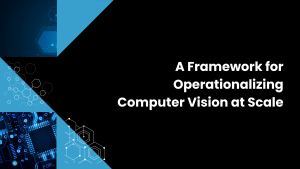Premise
Wikibon has written extensively on the impact of flash on IT budgets, IT operations, IT development speed and productivity and the enduser digital experience. Wikibon believes that flash is a key enabler of the strategic imperative to develop and deploy systems of intelligence to replace the current systems of record. This will change traditional data warehousing (which make a few people smart about past events and past engagements with customers) to real-time systems of intelligence that enable the whole organization to act in real-time, all the time, and dynamically change to affect and improve business outcomes.
The initial premise is that early migration to an all-flash datacenter will save significant IT budget, and improve the productivity of the organization, partners and customers. The additional investment resources released can be used as the first stage of a migration from systems of record to self-adjusting systems of intelligence, which bring Moore’s law to programming.
CIO Perspective
The following is a synopsis of our research over the past several years, and are the top ten reasons why CIOs should establish a strategy to migrate to all-flash datacenters, and ensure that all data center storage acquired in 2016 and beyond is all-flash.
- Cut costs. With Flash, the IT storage budget for current applications will decrease:
- Enterprise capacity flash enables data reduction from compression & de-duplication
- Enterprise capacity flash enables data sharing with instant copies with no data movement
- Flash has the performance to run multiple application suites from a single physical copy
- less than 10% of flash raw capacity is required compared with mechanical disk if data reduction and data sharing strategies are implemented
- CIO requires a laser focus on increased data sharing to lower costs (and dramatically improve developer productivity, see 5. below)
- The IT server budget for current applications can be cut significantly:
- Between 20% and 30% of server cycles are consumed by moving data from disk-based system to another disk-based system
- Between 10% and 30% of server cycles are wasted waiting for IO
- Balanced servers will require far fewer cores with increased core speed, larger DRAM and a reduced overall server budget
- The IT middleware software budget will not increase (and might even decrease):
- Fewer server cores (see 2. above) reduces the number of licenses and license maintenance required for database, virtualization & other middleware
- Some ISVs (e.g., Oracle) resist lower software payments by their customers, but future projects can be implemented without additional licenses
- The IT operational budget for current applications can be cut in half:
- 50% of operational budget is spent in problem determination, with storage being the assumed root-cause until proven otherwise.
- IT operations in data centers that have migrated to all-flash data centers report at least a 50% reduction in operational staff workload
- Late-night and weekend work can be virtually eliminated
- Faster and more consistent storage enables easier & faster implementation of automation & orchestration
- IT & business developers can double their productivity and triple code quality:
- Enterprise flash enables full application copies of data & code to be instantly available to all developers
- Faster response times from flash improve developer productivity
- Flash supports new development paradigms such as continuous development
- Early all-flash datacenters report very significant code quality increases, e.g., ISV reports build failures reduced from 17% to 2%
- Early all-flash datacenters report significantly reduced time to value (50%+) for new functionality
- IT can postpone all application IO performance rewrites or upgrades for at least two years:
- Transactional response times improved significantly
- Batch deadlines much more easily met
- IT can focus staff of new projects instead of maintaining the current:
- If 70% of IT staff devoted to maintaining the status quo, flash can quadruple (4x) the number of new projects supported by IT
- The organizations internal and external end-users can have a significantly better digital experience and significantly greater productivity:
- All-flash storage is a key enabler of faster response times, better batch performance and the ability to develop systems that enable application end-users to achieve much higher productivity
- The availability of IT systems can be significantly improved:
- Faster recovery times (RTO) can be achieved by recovering from flash storage
- Flash is intrinsically more reliable than mechanical disks
- Snapshots can be utilized to reduce RPO down to minutes
- Your organizations is better positioned for the journey to real-time analytics and systems of intelligence:
- Flash is a key enabler for systems of intelligence, enabling access to and processing of thousands of times more data than currently possible with mechanical magnetic disk technologies
- Enormous potential business benefits by migrating from batch data warehouses with rear-view mirror management to real-time analytics applied to real-time automated decision-making within enterprise systems of record.
Early adopters of the all-flash datacenter have found universal approval from the organizations that IT supports. This is a one-time hit before the half-life of gratitude returns to normal.
Note that in all the 10 reasons (except 7. and 10.), the budget reductions are focused on the existing applications. The most important strategic reasons for migrating to all-flash datacenters is to enable new applications unencumbered by the constraints of yesterday’s systems. The most crippling constraint is the slow and inconsistent response times to data held on mechanical disks. Systems have been designed to accommodate this constraint, and have been starved by the small amount of data that can be utilized. For example, large-scale applications that do not naturally have a small working set (e.g. include a total database scan cannot be cached) or are not amenable to running on parallel systems (e.g., applications that have significant single thread constrains, first described by Amdahl’s Law) cannot be implemented today.
New applications based on IO to flash devices, and in the future based on flash as an extension of memory, will allow thousands of times more data to be available. The data sources can blend internal data, mobile data, aggregated data from the cloud and data from the internet of things. The all-flash strategy allows organizations the freedom to increase investment in new systems, to incrementally improve productivity for current business processes and potential create new disruptive business processes. All this can be started within current IT budgets, and setting the groundwork for potential IT budget increases based on a record of success. The end-point for this work is developing self-adjusting systems of intelligence, where the system dynamically analyses the data streams and changes and develops new algorithm to improve business outcomes. Over time, this becomes a virtuous cycle, and as this functionality matures, Moore’s law will start apply to programming.
The biggest hurdle to implementing this strategy is the way the current systems are deployed, and the vested interests of vendors and internal staff in preserving the magnetic disk investments and environments they have deep expertise in.
Action item: Wikibon believes CIOs should put the highest priority in developing an all-flash datacenter strategy, and implement it so that all storage acquired and deployed is 100% all-flash by 2016. The key short-term focus for CIOs is to ensure that data sharing is optimized, and that IT organization and objectives support and drive increases in data sharing. The key long-term focus is to release the potential of the best and brightest in the organization to imagine an organization supported by applications without data limits.
David Floyer
CTO Wikibon
David.Floyer@Wikibon.org
@dfloyer


